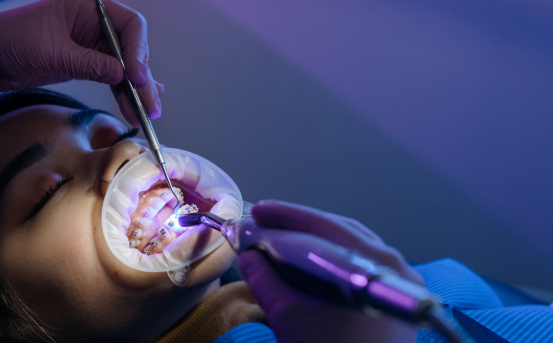Conservative dentistry is a specialized branch of dental care that prioritizes the early detection, prevention, and minimally invasive treatment of dental issues like tooth decay, fractures, and wear. Instead of removing large portions of a tooth or opting for extensive restorations right away, conservative dentistry uses techniques that aim to retain as much of your original tooth structure as possible.
What is conservative dentistry? It is essential to understand the significance of this approach in modern dental care, particularly how it can benefit your oral health.
What is Conservative Dentistry?
Conservative dentistry is a branch of dentistry that emphasizes the preservation of natural teeth by treating dental diseases in their early stages. It aims to remove only the diseased or damaged portion of a tooth and restore the affected area with appropriate materials, maintaining as much of the healthy tooth structure as possible.
Additionally, learning about what is conservative dentistry empowers patients to seek timely interventions, ultimately leading to better long-term dental outcomes.
Understanding what is conservative dentistry helps patients make informed choices about their dental health.
This approach is grounded in the philosophy of minimal intervention. The goal is to prevent disease, halt its progression, and preserve the natural form, aesthetics, and function of the teeth.
Ultimately, what is conservative dentistry revolves around achieving optimal oral health through careful dental practices.
Key Objectives of Conservative Dentistry
- Early detection of dental problems
- Minimally invasive treatments
- Preservation of tooth vitality
- Aesthetic and functional restoration
- Avoiding unnecessary extractions or root canals
Conservative dentistry forms the foundation of routine dental care and is often combined with preventive measures to maintain long-term oral health.
Common Procedures in Conservative Dentistry
Here are some of the most frequently performed procedures under conservative dentistry:
Many people often wonder, what is conservative dentistry, and how it can benefit their dental health.
- Dental Fillings :- When tooth decay causes a cavity, the decayed portion is removed, and the tooth is restored using filling materials like composite resin, glass ionomer, or amalgam. This is the most common conservative dental treatment.
- Inlays and Onlays :- Used when the damage is too extensive for a filling but not large enough for a crown. Inlays and onlays are custom-made restorations that fit into or onto the tooth to restore its strength and shape.
- Preventive Resin Restorations (PRR) :- For small areas of early decay, PRR is a conservative treatment that seals the affected area without removing too much of the tooth surface.
- Pit and Fissure Sealants :- These are thin protective coatings applied to the chewing surfaces of molars to prevent decay in deep grooves and fissures, especially in children.
- Enamel Microabrasion :- This minimally invasive technique removes superficial discolorations and white spots from the enamel using a combination of acid and abrasive agents.
- Fluoride Treatments :- Fluoride strengthens tooth enamel and helps reverse early signs of decay. It’s a preventive technique that aligns with the goals of conservative dentistry.
Advantages of Conservative Dentistry
When considering your options, ask your dentist, what is conservative dentistry and how it can be applied to your situation.
Opting for conservative dental procedures offers numerous benefits, including:
- Preserves Natural Tooth Structure :- Only the decayed or damaged portion of the tooth is removed, ensuring the integrity of the natural tooth is retained.
- Minimally Invasive :- Conservative dentistry involves fewer, less aggressive procedures that reduce discomfort and healing time.
- Cost-Effective :- By addressing problems early and avoiding complex treatments, conservative dentistry helps reduce long-term dental costs.
- Aesthetic Appeal :- Modern materials used in conservative restorations mimic the natural appearance of teeth, offering both functionality and beauty.
- Improved Oral Health :- Early intervention stops the progression of dental problems, helping to maintain good oral health and reduce the risk of tooth loss.Many patients seek solutions and want to know what is conservative dentistry to preserve their smiles for longer.
Who Needs Conservative Dentistry?
Conservative dentistry is suitable for:
- Individuals with early-stage tooth decay
- People with small fractures or chips in teeth
- Children and adults at high risk of cavities
- Anyone looking to preserve their natural teeth for the long term
- Patients seeking minimally invasive cosmetic improvements
Conservative Dentistry vs Restorative Dentistry
Understanding what is conservative dentistry can clarify why minimal intervention is crucial.
While the two may sound similar, conservative dentistry focuses on preserving natural tooth structure through minimal intervention. On the other hand, restorative dentistry may involve more extensive procedures like crowns, bridges, dentures, or implants to replace missing or severely damaged teeth.
If you often find yourself asking what is conservative dentistry, remember it emphasizes prevention.
In many cases, conservative dentistry is the first step before more advanced restorative options become necessary.
Tips for Maintaining Results from Conservative Dentistry
For effective results, knowing what is conservative dentistry is key to maintaining your oral health.
- Brush twice daily with fluoride toothpaste
- Floss regularly to clean between teeth
- Limit sugary foods and acidic drinks
- Visit your dentist every 6 months
- Use fluoride mouthwashes or gels if recommended
Conclusion
In conclusion, consider what is conservative dentistry to understand the value of preserving your natural teeth.
Conservative dentistry focuses on preserving what nature gave you — your natural teeth. By treating dental problems at their earliest stages and using minimally invasive methods, this approach ensures long-term oral health, comfort, and confidence in your smile. Remember, what is conservative dentistry is about making informed decisions for your dental care.
Whether you’re looking to treat a cavity, protect your teeth from decay, or enhance your smile without drastic changes, conservative dentistry can provide an effective, affordable, and lasting solution. Understanding what is conservative dentistry is the first step toward achieving your dental goals.























